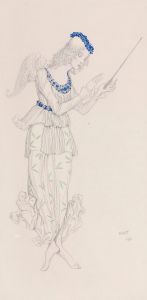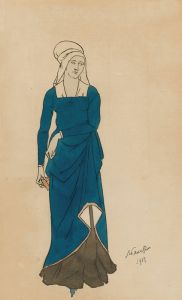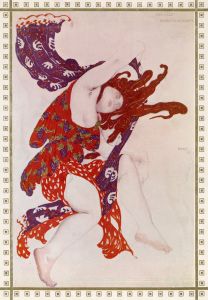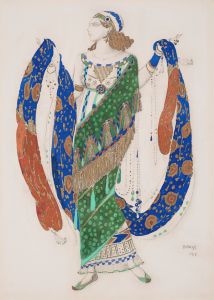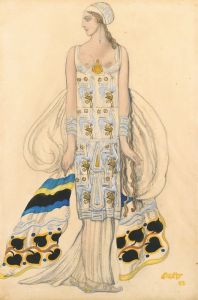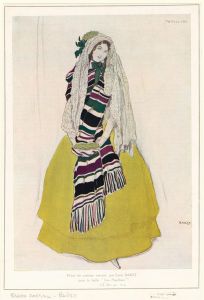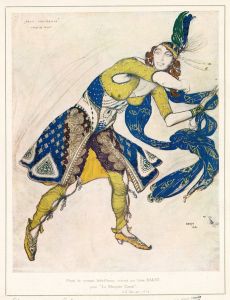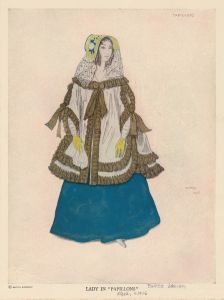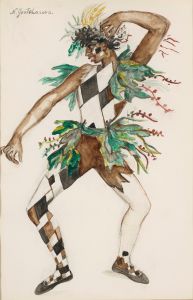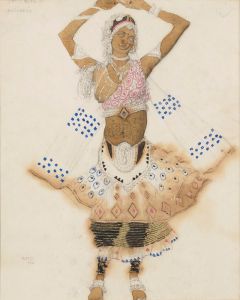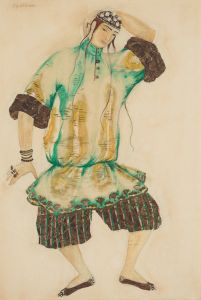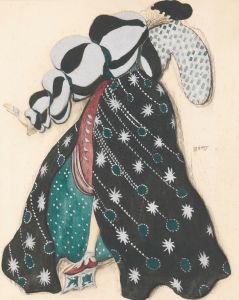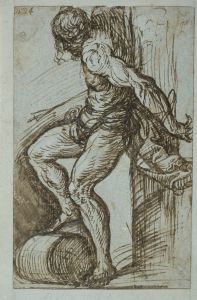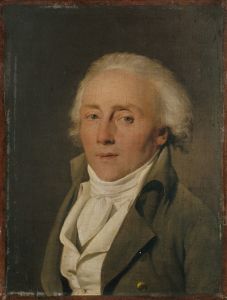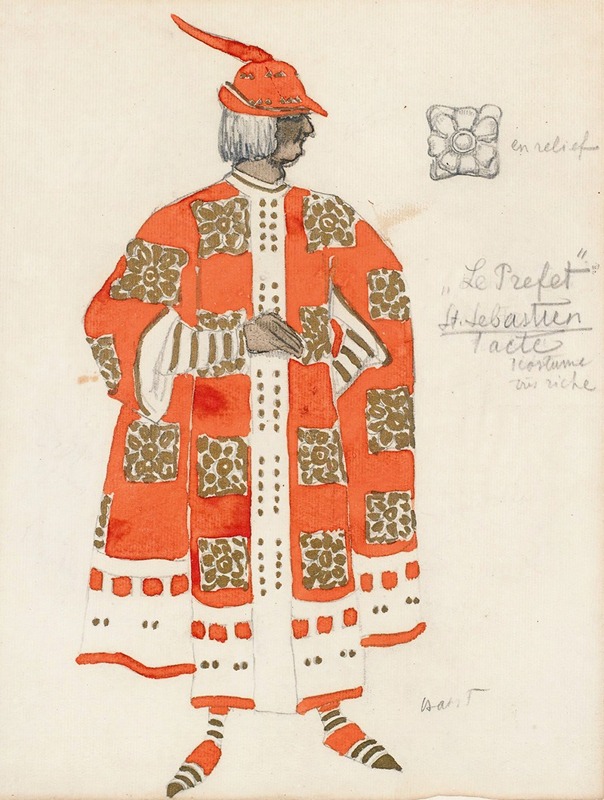
Costume Design For Act I Of The Martyrdom Of St. Sebastian
A hand-painted replica of Léon Bakst’s masterpiece Costume Design For Act I Of The Martyrdom Of St. Sebastian, meticulously crafted by professional artists to capture the true essence of the original. Each piece is created with museum-quality canvas and rare mineral pigments, carefully painted by experienced artists with delicate brushstrokes and rich, layered colors to perfectly recreate the texture of the original artwork. Unlike machine-printed reproductions, this hand-painted version brings the painting to life, infused with the artist’s emotions and skill in every stroke. Whether for personal collection or home decoration, it instantly elevates the artistic atmosphere of any space.
Léon Bakst was a prominent Russian painter and scene and costume designer, known for his work with the Ballets Russes, a groundbreaking ballet company established by Sergei Diaghilev. One of Bakst's notable contributions to the world of theater and costume design is his work for "The Martyrdom of St. Sebastian," a play by Gabriele D'Annunzio with music by Claude Debussy. The play premiered in 1911 and was a significant cultural event of its time, combining elements of drama, music, and dance.
Bakst's costume design for Act I of "The Martyrdom of St. Sebastian" is a testament to his innovative approach and his ability to blend historical and exotic influences with modern aesthetics. His designs were characterized by their vivid colors, intricate patterns, and luxurious fabrics, which were intended to enhance the theatrical experience and bring the characters to life in a visually striking manner.
The costume design for Act I reflects Bakst's fascination with the Orient and his ability to incorporate elements from various cultures into his work. This approach was typical of the Orientalist trend in art and design during the late 19th and early 20th centuries, which sought to evoke the mystery and allure of Eastern cultures. Bakst's designs often featured bold color combinations, elaborate embroidery, and flowing silhouettes, which were intended to create a sense of movement and drama on stage.
In "The Martyrdom of St. Sebastian," Bakst's costumes played a crucial role in conveying the play's themes and enhancing its visual impact. The use of rich textiles and detailed ornamentation helped to establish the setting and mood of the production, while also highlighting the characters' personalities and roles within the narrative. Bakst's ability to create a cohesive visual language through his costume designs was instrumental in the success of the play and contributed to his reputation as a leading figure in the world of theater design.
Bakst's work on "The Martyrdom of St. Sebastian" is also notable for its collaboration with other prominent artists of the time. The play's music was composed by Claude Debussy, a leading figure in the Impressionist movement in music, and the production was directed by Gabriele D'Annunzio, an influential Italian writer and playwright. This collaboration between artists from different disciplines and backgrounds was a hallmark of the Ballets Russes and contributed to the company's reputation for innovation and artistic excellence.
Overall, Léon Bakst's costume design for Act I of "The Martyrdom of St. Sebastian" exemplifies his skill as a designer and his ability to create visually stunning and thematically rich theatrical experiences. His work continues to be celebrated for its creativity, attention to detail, and its ability to transport audiences to different times and places through the power of visual storytelling.





